Non-fungible tokens, more commonly known as NFTs, are unique digital items powered by blockchain technology, the same technology used to create cryptocurrencies. They exist as tokens on a blockchain, which means they can be bought, sold and traded just like any other cryptocurrency. Specalised marketplaces have been developed that let you buy NFTs, whether from a famous artist or your next door neighbor.
NFTs are not just limited to digital art either – they can be used to represent almost any type of asset which has made them popular across a range of mediums, such as music, gaming and collectibles. Some are even used to represent real-world assets like real estate or club memberships. However, unlike cryptocurrencies, they are "non-fungible'', which means they cannot be replicated like-for-like the way you can with most cryptocurrencies.
Though many centralised and decentralised exchanges are beginning to offer NFTs to their users, the most common way to purchase these assets is through specalised NFT marketplaces. These marketplaces typically offer a range of functions beyond the trading of NFTs, and often include competitions, games and the ability to mint your own digital asset.
NFT marketplaces comparison
Take a look at the following NFT marketplaces and use the table to compare them on things like types of NFTs available (categories), payment methods, and whether they let you sell your own NFTs (known as minting). Once you've found a marketplace that suits you, click on the "Go to Site" button to create an account and start exploring the exciting world of NFTs.
What are NFT marketplaces?
NFT marketplaces are digital platforms where users can buy, sell, trade, show off and create their own NFTs.
While NFT marketplaces vary in functionality, they all operate on a similar basis – they are essentially a storefront built on the blockchain that specalises in NFTs.
Potential NFT investors will typically need to have access to a cryptocurrency wallet and compatible crypto coins in order to participate in the marketplace, whether it be for trading NFTs or engaging in community events.
How to compare NFT marketplaces
As NFTs have surged in popularity, so too has the number of platforms that can be used to exchange these digital assets. This may make it difficult for newcomers to decide which marketplace is right for them. With this in mind, here are a few things worth considering when looking into NFT trading platforms.
Type of NFTs offered
Certain NFT marketplaces like OpenSea operate on a "jack-of-all-trades" basis and give their clientele a wide-ranging selection of NFTs to purchase from. Conversely, others have a more niche selling point and deal exclusively in that. For example, NBA Top Shot's platform only sells digital highlights from NBA basketball in trading card format.
Fees
As the majority of NFT marketplaces are built on a blockchain, transactions will usually be accompanied by a gas fee. This varies from platform to platform, and often depends on the underlying protocol being incentivised. For example, an NFT platform built on Ethereum will likely have higher fees than one using Binance Smart Chain.
Cryptocurrency exchanges
Some NFT platforms have an exchange integrated in their marketplace, which allows users to buy cryptocurrency (which they can then use to purchase NFTs) all on the same website. Binance and Crypto.com are 2 reputable exchanges which have integrated an NFT marketplace into their services.
Minting NFTs
The creation of NFTs may be a niche requirement for some investors, but it is a large aspect of the NFT ecosystem. It's worth considering whether this is an avenue you'd like to pursue down the line and may influence which NFT marketplace you ultimately decide to use. This function is particularly pertinent for content creators and artists.
Marketplace games and events
Those that want to get a little more out of their NFTs may prefer a marketplace that has additional gameplay. For example, ZED RUN is an NFT marketplace that allows users to purchase a digital racehorse and run it in races. Its performance is dictated by pedigree, as well as rarity, which also influences the price. Multiple other marketplaces offer similar features.
Popular NFT marketplaces
OpenSea
OpenSea is the largest NFT marketplace in the crypto space based on buy/sell volume. While initially conceived in 2018 as a gateway for users to invest in CryptoKitties, the platform has since ballooned into a one-stop-shop for NFTs, offering millions of different NFTs in a variety of formats.
OpenSea is built on the Ethereum protocol, and has integrated support for the Klaytn and Polygon networks.
Read our full review of OpenSeaRarible
Rarible is a decentralised NFT marketplace that is developed and owned by the community of RARI holders – the platform's unique crypto token. This marketplace is focused on the minting of NFTs and assigning fair compensation to artists for their work.
The most prominent category of NFTs available is digital art, but Rarible also supports music, videos, memes and even NSFW content.
Nifty Gateway
Nifty Gateway is a marketplace owned by the cryptocurrency exchange Gemini that sells a wide-range of NFTs known as "Nifties". Like many other similar platforms, Nifties typically take the form of artwork, although all sorts of other digital items are available. Prominent creators on the platform include deadmau5 and Beeple.
Mintable
As its name suggests, Mintable is a platform focused on giving creators sovereignty and value to their digital content. Perhaps the most appealing aspect of this marketplace is its "gas-free" minting protocol, which means artists can create NFTs for free.
For non-creators, Mintable offers a broad range of products, including art, collectibles, music, game items and even trading cards celebrating amateur athletes' achievements.
SuperRare
SuperRare is another NFT marketplace focused on digital art, particularly that which is conceptual in nature. Many of the available NFTs are quite abstract and complex, as opposed to the simpler, pixel-based artwork that can be found on competing platforms.
There are only 4 categories of NFTs to choose from: still image, GIF, 3d artwork and video.
What types of NFTs can you buy in marketplaces?
As NFTs grow in popularity, they simultaneously grow in concept. Originally, most NFT marketplaces offered digital art or collectibles (the first major offerings to gain public traction being CryptoPunks and CryptoKitties.)
The potential of NFTs has expanded to include compatibility for nearly any imaginable digital file, and many NFT trading platforms provide a wide range of categories for investors to choose from.
Prominent NFT categories include:
| Category | Description | Prominent marketplace(s) |
|---|---|---|
| Digital art | Any sort of art that has been created on a digital device (computer, phone or tablet). | SuperRare, Nifty Gateway, Mintable, Rarible |
| Memes | An image or video that is passed on to other people and often altered to match current events in popular culture. | Meme, Mintable, Rarible, OpenSea |
| Photography | An image taken with a camera that may be digitally altered. | AirNFTs, GhostMarket, Foundation, OpenSea |
| Games | Digital items or avatars that can be used in a video game, or an entire NFT marketplace built around a single game ecosystem (sometimes known as a metaverse). | ZED RUN, Axie Infinity, Rarible |
| Collectibles | Typically virtual trading cards, collectibles take the form of any digital creation that has identifiable attributes that impact value (e.g. a breed lineage or a serial number). | NBA Top Shot, OpenSea, Rarible |
| Metaverses | A metaverse is essentially any digital environment where humans interact, often associated with a video game. In the case of NFTs, they can take the shape of avatars or digital land. | NFTworld.io, Rarible, Decentraland |
| Music | Any sort of music contained within a digital file can be minted or purchased as an NFT. | OpenSea, Nifty Gateway, Opulous |
| Domains | Users can purchase and own NFTs backed by domain names on the blockchain. | Unstoppable Domains, Rarible, OpenSea |
What do NFT marketplace tokens do?
Not every NFT marketplace has a native token – many use ETH or BNB as their primary currency. Those that do, such as Rarible's RARI token, have a varying range of functions.
Certain NFT marketplace tokens are solely used for transactions, be it the purchase or sale of NFTs, as well as to pay for the cost of gas fees.
Some platforms require their native token to be used whenever a user mints a new NFT.
Finally, certain decentralised NFT marketplaces have shifted their governance model to that of a decentralised autonomous organisation (DAO), where token holders are eligible to vote on and submit proposals on the development of the platform. Rarible is the most well-known NFT marketplace that uses a DAO governance system.
Common NFT marketplace fees
As with most applications on the blockchain, participating in an NFT marketplace comes with a range of fees that should be considered.
Each platform's fees will vary based on their economic model, but there are a few distinct occasions when fees are likely to be relevant.
Transactions (the purchase or sale of an NFT) will often incur a fee, which can be a fixed rate or a proportion of the sale price.
Minting new tokens will usually be accompanied by a gas fee, which helps pay for the computational and resource expenditure of the relevant blockchain. Some platforms, like Mintable, offer this feature for free.
Finally, depending on the payment method (for example, bank transfer or direct purchase from wallet), users may rack up fees for withdrawing and depositing funds into their NFT marketplace account.
It may be worth assessing the various fee structures for NFT platforms you are interested in joining prior to signing up. Our individual review pages have a breakdown of fees for each platform.
Are NFT marketplaces safe to use?
NFT marketplaces are a relatively novel venture in the crypto space, with many only being a couple of years old. Like everything on the blockchain, there are inherent risks with using NFT marketplaces. Hacks and exploits have occurred in the past, with users losing expensive NFTs as a result.
NFTs are inherently smart contracts, and are also at the mercy of any smart contract bugs that might pop up.
Peer-to-peer NFT marketplaces come with the same issues that regular P2P marketplaces do and may be rife with scammers or price gougers.
With all of that in mind, well-regulated and economically secure NFT marketplaces are just as safe to use as any other respected crypto exchange, as long as the above risks are accounted for.
How to buy NFTs on an NFT marketplace
Purchasing NFTs on a marketplace like OpenSea is a relatively simple process.
- Create an account. Head over to the OpenSea web page and sign up. To accomplish this, you must have set up a supported crypto wallet like MetaMask. If you haven't done so already, head over to this guide to see how.
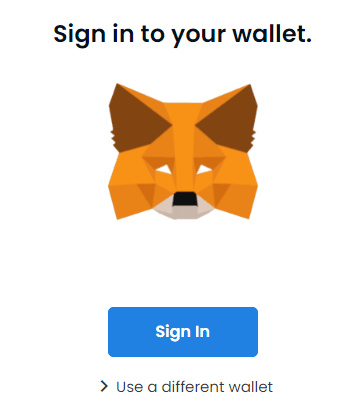
- Enter user details. Once you've linked your wallet to OpenSea, enter in the required details.
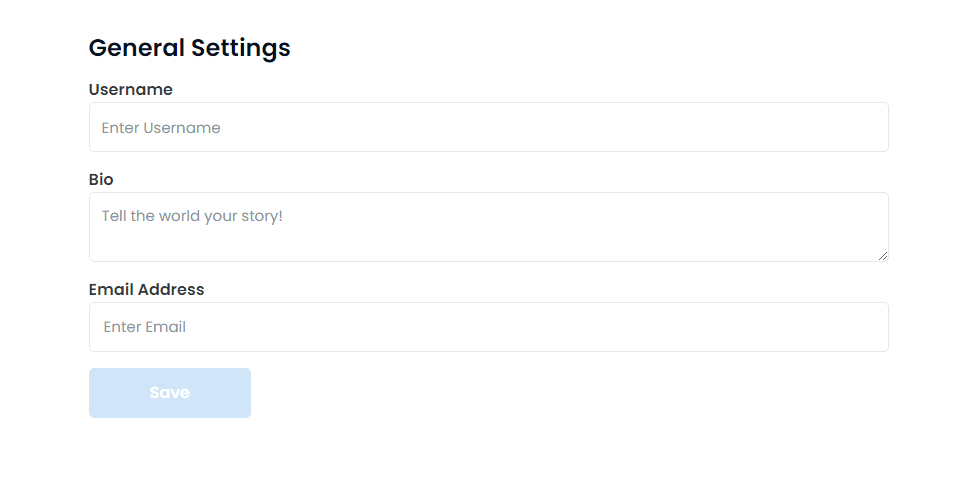
- Verify your email address.To finish setting up your account, go to your email and follow the relevant instructions.
- Select the NFT you wish to purchase. Head over to the NFT marketplace and browse through the millions of available NFTs.
- Ensure the required funds are in your wallet. Once you've selected an NFT you wish to purchase, make a note of the price and make sure you've deposited that amount (and a little more for transaction fees) to your wallet. Once done, simply select "Buy now", or make an offer.
- View your NFT collection! Once the transaction has been executed, simply head over to the "My Collections" tab to view your shiny new collectible!
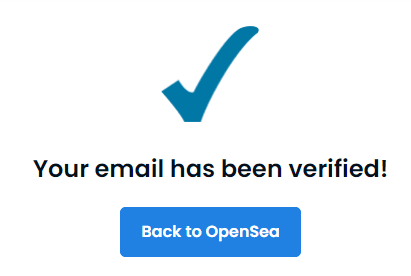
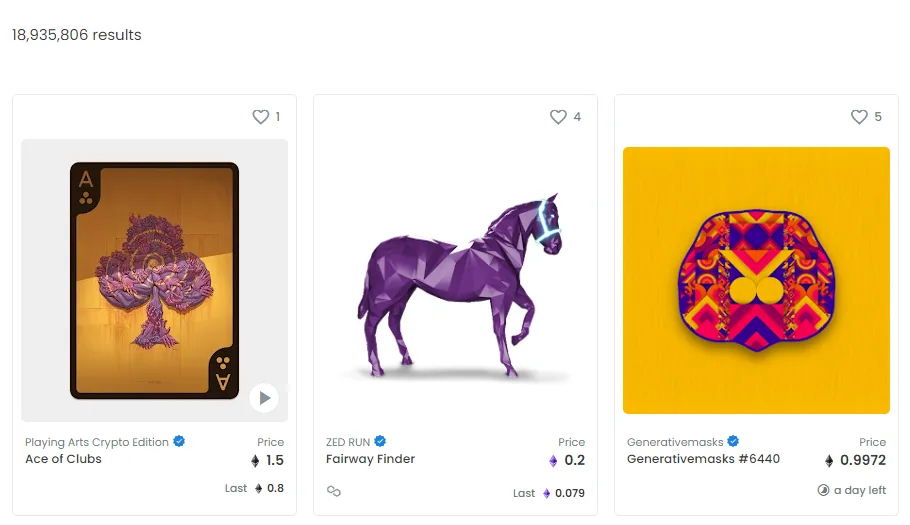
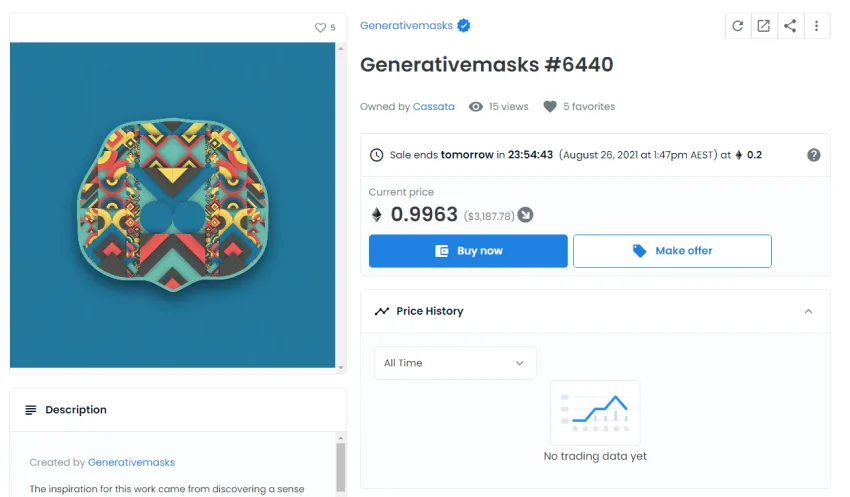
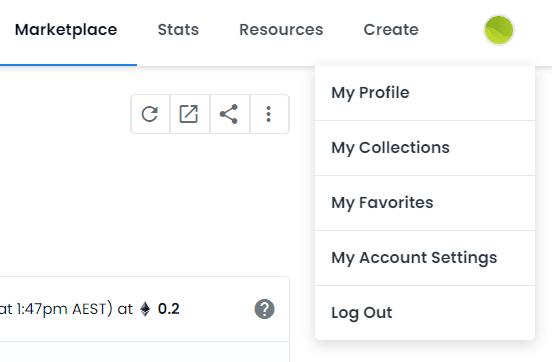
How to sell NFTs on OpenSea
Selling NFTs on OpenSea is quite similar to purchasing them.
- Navigate to "My Profile". Firstly, select "My Profile" from the dropdown menu to view the NFTs you have available in your wallet.
- Select which NFT you wish to sell. Once you've decided which NFT you want to sell, click on it and simply press the "Sell" button on the top right.
- Fill in listing details. OpenSea gives sellers a number of sale options, including set price or auction bid, as well as bundling up NFTs as a collection to be sold. Fill in these details and select "Post Your Listing".
- Sell your NFT. That's it! Your NFT is out there and available for purchase.
How to create an NFT on OpenSea
Creating an NFT on OpenSea is a little more complex than buying and purchasing NFTs, but is still very straightforward.
- Select "Create". Once signed up and logged in, press the "Create" button on the home page (or in the top right of the dashboard).
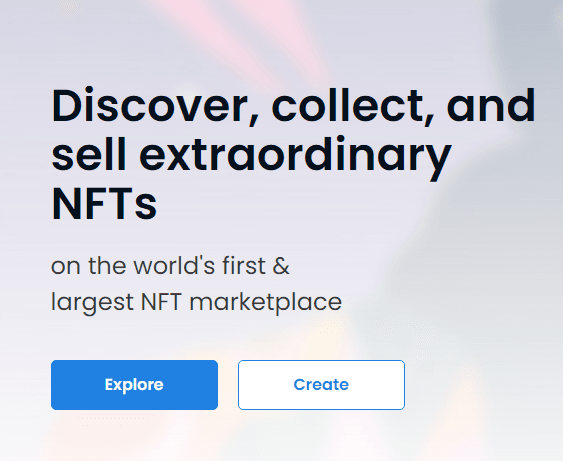
- Fill out relevant fields. Once you've decided what exactly you'd like to mint to an NFT, all you have to do is add the relevant information to the form. This includes name, uploading the file, a description, and altering various NFT properties if desirable (for example, a serial number or progression levels).
- Choose the blockchain. Now, select the blockchain you wish to mint your NFT onto. The default choice is Ethereum, but you can also select Polygon.
- Mint your NFT. That's it! Your NFT is now available for viewing and showing off in your "My Profile" tab.
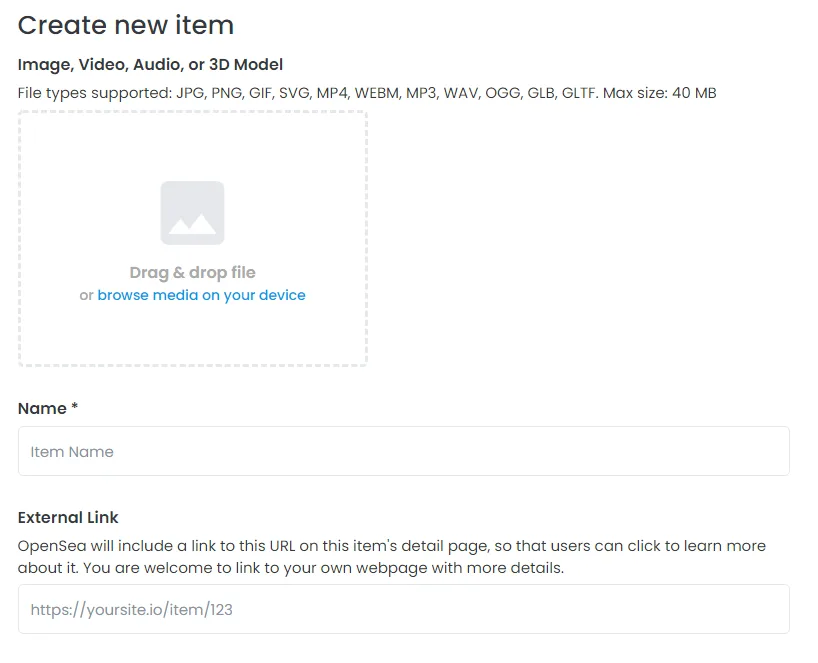

In order to mint an NFT, you will need some funds in your wallet to pay for gas fees. This will vary depending on which blockchain you are using, but the most popular are:
- Ethereum (ETH): How to buy ETH
- Polygon (MATIC): How to buy MATIC
- Binance Smart Chain (BNB): How to buy BNB
- Solana (SOL): How to buy SOL
Frequently asked questions
More guides on Finder
-
How to make money with NFT games
Play, trade and earn with blockchain games. Here are 10 ways to make money with NFT gaming.
-
Top NFT metaverse worlds
Discover what NFT metaverses actually are and which projects are leading the way in this digital ecosystem.
-
Top metaverse projects
Keep an eye out for the most promising metaverse projects. Here are the top general and game-focused metaverse projects to watch.
-
NFT trading cards: What they are and how they work
NFT trading cards are similar to trading cards in real life. It’s a large, profitable niche – especially in the gaming sphere.
-
NFT designs
Not everyone is an artist but anyone can mint an NFT. Here’s where to look for in NFT designers, what it may cost and what to watch out for.
-
NFT avatars
Avatars aren’t anything new, but NFT avatars are different. Here’s how they work, how and where to buy one, and what makes them valuable.
-
Top crypto games
Discover the latest and most popular GameFi titles, project details, upcoming launches and more in this comprehensive crypto game list.
-
Star Atlas review
Conquer the Star Atlas metaverse and earn value in this blockchain-based play-to-earn game based in the year 2620.
-
NFT statistics
The definitive ranking of the NFT adoption across 26 countries.
-
How to make NFTs
Find out what you need to create your own NFTs. We walk you through a step-by-step process for how to mint and then sell your own NFT.
